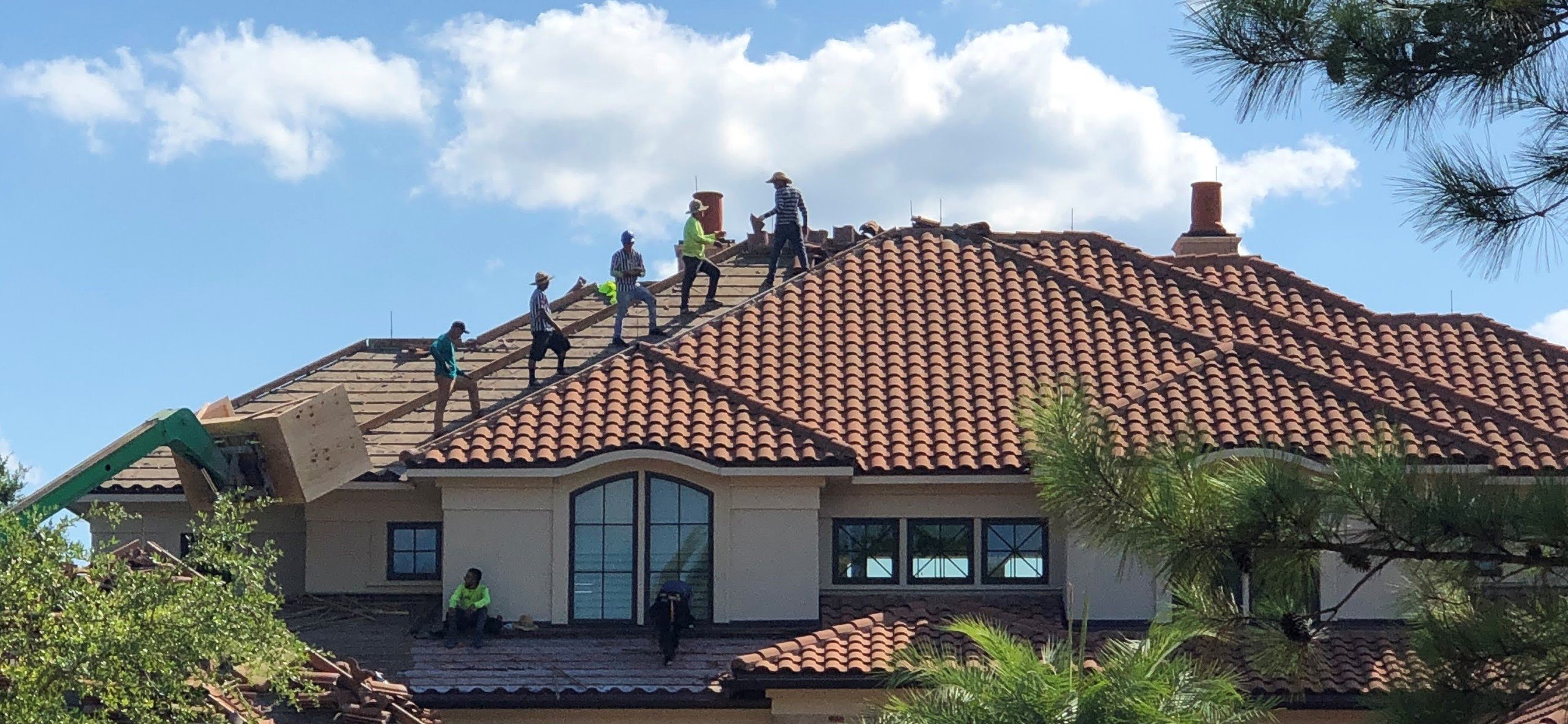Step-by-Step Guide to Locating the Right Roofing Companies in Gainesville
Wiki Article
Ideal Practices for Ensuring Proper Roof Ventilation
Guaranteeing appropriate roof covering air flow is essential for the durability and effectiveness of a roof. A well balanced consumption and exhaust vent proportion, frequently 1:300, plays a crucial function, with intake vents preferably positioned at the reduced edge of the roofing for trendy air entrance and exhaust vents at the top for cozy air leave. Regular assessments to determine clogs and maintain clear airflow are extremely important. Additionally, maintaining insulation away from vents is critical to stop air movement limitation. Recognizing these foundational aspects establishes the phase for even more thorough insights right into installment and upkeep practices that can dramatically enhance your roofing system's performance.Understand Ventilation Fundamentals
Effectively recognizing ventilation fundamentals is vital for guaranteeing the long life and performance of roof. Effective ventilation mitigates moisture buildup and temperature level extremes in the attic room, both of which can lead to substantial architectural damages over time. A well-ventilated roofing helps in avoiding usual issues such as mold and mildew growth, wood rot, and ice dams, which can endanger the stability of the roof covering products and the underlying frameworks.The primary goal of ventilation is to facilitate the movement of air, permitting a constant exchange between the outdoor and indoor atmospheres. This balance is achieved through a combination of consumption and exhaust vents that interact to maintain optimal air movement. Consumption vents, generally located along the eaves or soffits, permit fresh air to get in the attic area, while exhaust vents, typically located at or near the roofing system ridge, make it possible for warm, damp air to leave.
Trick variables affecting the effectiveness of roof covering air flow consist of appropriate placement, adequate sizing, and making sure that both consumption and exhaust vents are unhampered. Routine evaluation and maintenance are important to identify possible clogs, damage, or inadequacies in the ventilation system, therefore securing the roofing system's performance and longevity.
Sorts Of Roofing System Vents
Roofing vents play a vital duty in maintaining effective attic room air flow and, by expansion, the total wellness of the roofing system. Different kinds of roof vents are offered, each with one-of-a-kind advantages customized to specific roof needs.
Soffit vents are mounted under the eaves and job in tandem with roofing vents to ensure a balanced consumption and exhaust system. By allowing cooler air to enter from below, soffit vents help with the expulsion of warm air with upper vents. Gable vents, located on the outside walls of the attic room, deal an additional reliable option, especially in homes with saddleback over here roofs.
Analyze Your Present Ventilation

Following, think about the age and problem of your roofing products and ventilation parts. Older systems may not comply with existing building ordinance or might have degraded with time, reducing their performance. Conduct a thorough exam to identify any indicators of deterioration, such as corrosion, damage, or gaps that might jeopardize the system's performance.
Additionally, measure the attic temperature level and moisture levels. High temperatures and moisture can show inadequate air flow.
Installation Best Practices
Efficient setup of roof covering ventilation systems is vital for making certain optimal performance and long life. Proper installation begins with comprehending the details air flow needs of the structure and the roof it covers. This includes computing the proper proportion of intake to exhaust vents, usually sticking to the 1:300 policy, which stipulates one square foot of ventilation for each 300 square feet of moved here attic room flooring space.
Intake vents should be mounted at the roofing system's reduced edge, usually in the soffits, to enable trendy air to go into. Exhaust vents, on the other hand, need to be installed near or at the roofing system's top to help with the leave of cozy, moist air.
Seal all air vent connections carefully to avoid air leakages and prospective water seepage. Use premium products and comply with supplier guidelines to guarantee resilience and efficiency. In addition, incorporating ridge vents with baffles can significantly enhance air flow performance by avoiding wind-driven rainfall and snow from going into the attic.
Eventually, exact installment of roof covering ventilation systems reduces prospective issues such as mold growth, ice dams, and structural damages, making sure the roof's integrity and the building's total wellness.
Normal Upkeep Tips
Consistency in maintenance methods is fundamental to making certain the long-lasting effectiveness of roofing air flow systems. During these evaluations, make sure that vents are complimentary of debris, nests, and various other blockages that could hamper air movement.
Use a soft brush or a vacuum cleaner to get rid of dust and particles from intake and exhaust vents. Be careful not to harm the vent screens or louvers during the procedure.
Appropriate insulation is just as essential. Guarantee that attic room insulation does not obstruct the vents, as this can seriously limit air flow. If any kind of insulation has moved or cleared up, rearrange or change it to preserve a reliable obstacle.
Finally, replace any damaged or missing out on components quickly. Broken vents, broken tiles, or deteriorated blinking can all add to insufficient air flow and must be attended to right away. Routine upkeep guarantees that the roof air flow system works ideally, thereby extending the lifespan of the roofing system itself.
Final Thought
Guaranteeing proper roof air flow is paramount for keeping the efficiency and longevity of a roof covering system. Adherence to the 1:300 intake and exhaust air vent ratio, coupled with the calculated positioning of vents, is vital.A well balanced intake and exhaust vent proportion, frequently 1:300, plays a critical duty, with consumption vents preferably placed at the lower side of the roofing for great air access and exhaust vents at the top for cozy air exit. Consumption vents, usually situated along the eaves or soffits, allow fresh air to get in the attic room go area, while exhaust vents, usually situated at or near the roof ridge, allow warm, moist air to run away.
Soffit vents are set up under the eaves and job in tandem with roof covering vents to guarantee a well balanced intake and exhaust system. By enabling cooler air to get in from below, soffit vents help with the expulsion of warm air through upper vents. Adherence to the 1:300 consumption and exhaust vent ratio, combined with the critical placement of vents, is essential.
Report this wiki page